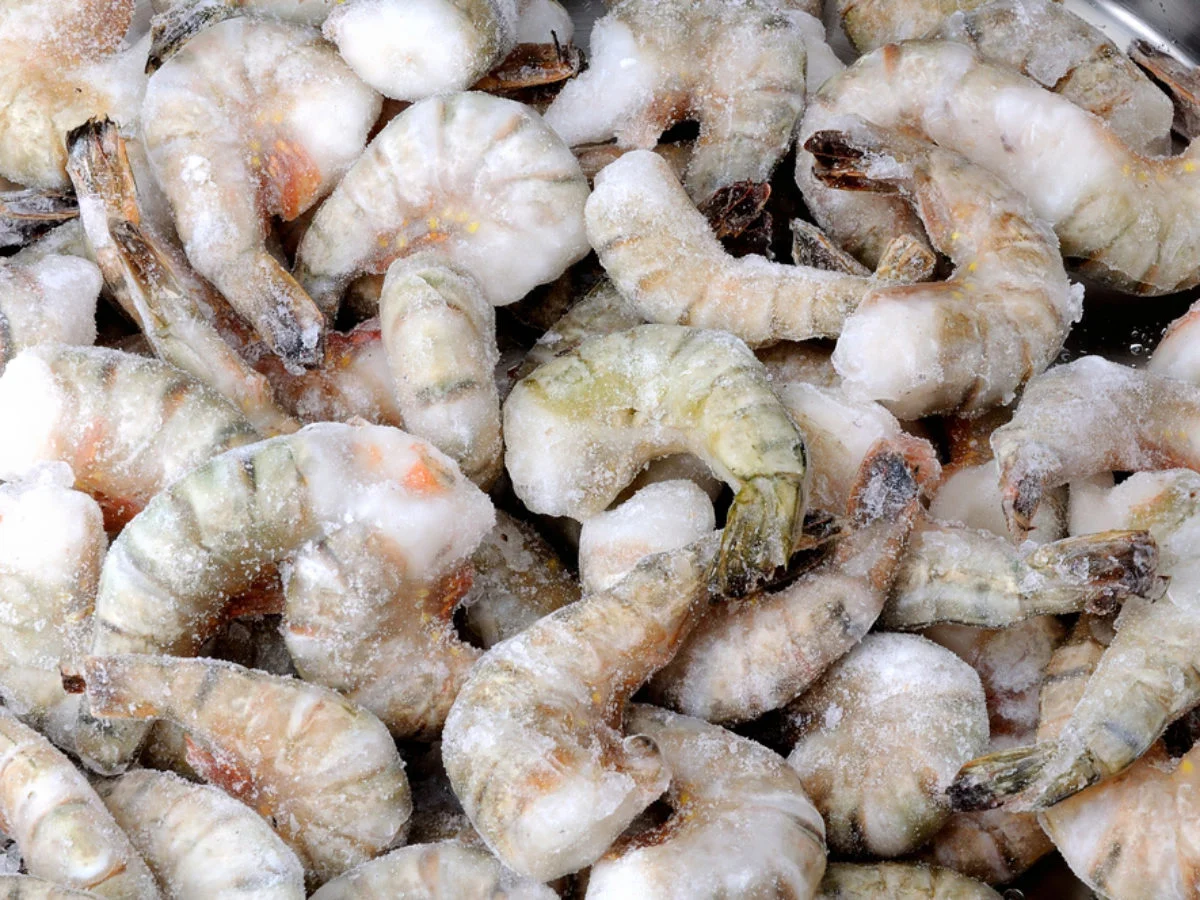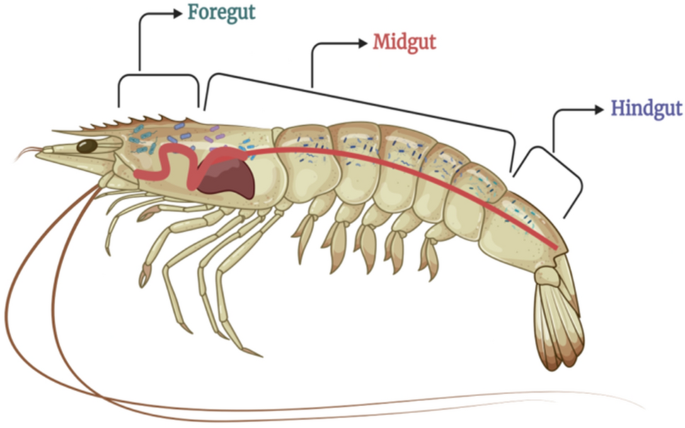Golden Tiger Shrimp face health problems like bacterial infections and parasitic infestations. Poor water quality often exacerbates these issues.
Golden Tiger Shrimp, a popular choice among aquarists, require meticulous care to thrive. These vibrant creatures can suffer from various health problems, primarily bacterial infections and parasitic infestations. Maintaining optimal water quality is crucial to their well-being. Contaminated or suboptimal water conditions can lead to stress, making them more susceptible to diseases.
Regular monitoring of water parameters, such as pH, temperature, and ammonia levels, is essential. Providing a balanced diet and a clean habitat can help prevent many common health issues. Understanding their specific needs and promptly addressing any signs of illness can ensure a healthy and thriving shrimp population.

Credit: www.facebook.com
Common Health Issues
Golden Tiger Shrimp face several health problems. Understanding these issues can help in maintaining their health. Here are some common health problems:
Bacterial Infections
Bacterial infections in shrimp are often caused by poor water quality. These infections can lead to massive shrimp deaths. Common signs include lethargy and loss of appetite.
- Vibrio species are a common culprit.
- Maintain clean water to prevent infections.
- Use antibiotics carefully under expert guidance.
Viral Diseases
Viral diseases are serious and can spread quickly. They often result in high mortality rates. Two common viral diseases are:
- White Spot Syndrome Virus (WSSV)
- Yellow Head Virus (YHV)
| Disease | Symptoms | Prevention |
|---|---|---|
| WSSV | White spots on shell | Use virus-free stock |
| YHV | Yellow head | Quarantine new shrimp |
Fungal Problems
Fungal problems in shrimp are less common but still significant. They usually affect shrimp that are stressed or injured. Fungal infections can cause black spots on the shrimp’s body.
- Lagenidium is a common fungal pathogen.
- Ensure proper water quality and reduce stress.
- Use antifungal treatments as needed.

Credit: link.springer.com
Symptoms To Watch
Golden Tiger Shrimp are beautiful and delicate creatures. Recognizing health problems early is crucial for their survival. Watch for specific symptoms indicating potential health issues. Below are key signs to look for:
Discoloration
Healthy Golden Tiger Shrimp have a vibrant, golden color. If you notice any changes in their color, it could indicate a health problem. Common discolorations include:
- White patches on the shell
- Black spots on the body
- Faded coloration
Discoloration can result from bacterial infections, poor water quality, or nutritional deficiencies. Prompt action is essential to save your shrimp.
Lethargy
Healthy shrimp are active and constantly moving. Lethargy is a sign of distress. If your shrimp are not moving much, it could be a problem. Watch for:
- Reduced activity levels
- Staying in one spot for long periods
- Lack of response to food
Lethargy can be caused by poor water conditions, stress, or disease. Ensure the tank environment is optimal.
Abnormal Growth
Golden Tiger Shrimp should grow uniformly. Abnormal growth patterns can indicate underlying issues. Look for:
- Misshapen bodies
- Uneven shell development
- Swollen or shrunken body parts
Abnormal growth may result from genetic issues, malnutrition, or infections. Regularly monitor their growth patterns.
Preventive Measures
Golden Tiger Shrimp are delicate creatures. They need special care to stay healthy. By taking certain steps, you can keep them disease-free. Here are some key preventive measures.
Water Quality Maintenance
Maintaining good water quality is crucial. Dirty water can make shrimp sick. Test water parameters regularly. Ensure pH levels are between 7.5 and 8.5. Keep ammonia and nitrite levels at zero. Change 20% of the water weekly. This helps remove waste and toxins.
| Parameter | Optimal Range |
|---|---|
| pH | 7.5 – 8.5 |
| Ammonia | 0 ppm |
| Nitrite | 0 ppm |
Proper Feeding Practices
Feeding shrimp properly is essential. Overfeeding can cause health issues. Feed them twice a day. Use high-quality shrimp food. Avoid overfeeding; it pollutes the water. Remove uneaten food after two hours. This prevents water contamination.
- Feed twice daily
- Use high-quality food
- Remove uneaten food after 2 hours
Quarantine Procedures
Quarantine new shrimp before adding them to the tank. This prevents the spread of diseases. Keep new shrimp in a separate tank for two weeks. Observe them for any signs of illness. Only introduce healthy shrimp to the main tank.
- Quarantine for 2 weeks
- Observe for illness
- Introduce only healthy shrimp
Effective Treatments
Golden Tiger Shrimp are delicate creatures. They can face various health problems. Effective treatments are necessary to keep them healthy. This section covers some key treatments: Antibiotic Use, Antiviral Medications, and Fungal Treatments.
Antibiotic Use
Antibiotics help fight bacterial infections in shrimps. It’s important to use the right antibiotic. A veterinarian can advise on the best choice. Always follow dosage instructions. Overuse can lead to resistance. Here is a table of common antibiotics:
| Antibiotic | Dosage | Duration |
|---|---|---|
| Oxytetracycline | 50 mg/kg | 5 days |
| Sulfadimethoxine | 100 mg/kg | 7 days |
Antiviral Medications
Viruses can harm shrimps badly. Antiviral medications can help. Not all viruses have treatments yet. Common antiviral options include:
- Acyclovir
- Ribavirin
Always consult a vet for the best course of action. Proper water quality can prevent many viral issues.
Fungal Treatments
Fungal infections are common in shrimps. They need quick action. Anti-fungal treatments include:
- Methylene Blue
- Malachite Green
- Potassium Permanganate
Ensure the right concentration. Overuse can harm shrimps. Here are some dosages:
| Fungicide | Dosage | Duration |
|---|---|---|
| Methylene Blue | 2 mg/L | 3 days |
| Malachite Green | 0.1 mg/L | 4 days |
Always monitor the shrimp’s response to treatment. Good water quality is crucial for their recovery.
Nutritional Needs
Golden Tiger Shrimp require a balanced diet to thrive. Their diet impacts their health and growth. Proper nutrition prevents many health problems.
Balanced Diet
Golden Tiger Shrimp need a balanced diet of proteins, fats, and carbohydrates. This helps them grow strong and healthy. They eat algae, small plants, and commercial shrimp feed. Feed them a mix of natural and commercial food.
Avoid overfeeding. Overfeeding causes water pollution and health issues. Feed them small amounts twice a day. This keeps their water clean and them healthy.
Vitamin Supplements
Vitamin supplements are crucial for Golden Tiger Shrimp. They need vitamins A, D, and E. These vitamins boost their immune system.
- Vitamin A: Helps with growth and vision.
- Vitamin D: Strengthens their shell.
- Vitamin E: Protects their cells from damage.
Mix vitamin supplements with their food. This ensures they get all the necessary nutrients.
Mineral Requirements
Minerals are essential for Golden Tiger Shrimp’s health. They need calcium, magnesium, and potassium. These minerals strengthen their shell and support muscle function.
| Mineral | Function |
|---|---|
| Calcium | Strengthens their shell. |
| Magnesium | Supports muscle function. |
| Potassium | Regulates fluid balance. |
Provide mineral-rich food and supplements. This ensures they meet their mineral needs.
Environmental Factors
Golden Tiger Shrimp are delicate creatures. They need perfect conditions to thrive. Environmental factors play a crucial role in their health. Let’s explore the key elements.
Temperature Control
Golden Tiger Shrimp need a stable temperature. The ideal range is 22-26°C (72-79°F). Too hot or too cold can stress them. Stress makes them sick easily. Use a reliable heater and thermometer.
Salinity Levels
Salinity is the salt level in water. Golden Tiger Shrimp prefer brackish water. The right salinity range is 15-25 ppt (parts per thousand). Use a hydrometer to measure this. Changes in salinity must be slow and steady. Sudden changes can harm shrimp.
Tank Cleanliness
Clean water is vital for shrimp health. Dirty tanks cause many problems. Regular water changes are necessary. Remove uneaten food and waste daily. Use a good filter to keep water clean. Healthy tanks make healthy shrimp.
| Environmental Factor | Ideal Range |
|---|---|
| Temperature | 22-26°C (72-79°F) |
| Salinity | 15-25 ppt |
| Water Changes | Weekly |
Keeping an eye on these factors can prevent many health problems. Happy shrimp live in balanced environments.
Stress Reduction
Stress can cause health problems in Golden Tiger Shrimp. Reducing stress helps keep them healthy and happy. Here are key ways to reduce their stress.
Proper Handling
Handle the shrimp gently. Use soft nets to avoid injuries. Never squeeze or drop them. Proper handling reduces stress and prevents harm.
Adequate Space
Give each shrimp enough space. Overcrowding causes stress. Provide a big tank with hiding spots. Adequate space makes them feel safe and secure.
Minimizing Noise
Keep the environment quiet. Loud noises scare the shrimp. Place the tank in a calm area. Minimizing noise helps them feel calm and relaxed.

Credit: delosaqua.com
Regular Monitoring
Regular Monitoring of Golden Tiger Shrimp is essential for maintaining their health. It involves routine checks and observations to detect any potential issues early. This proactive approach can prevent diseases and keep your shrimp healthy.
Health Check-ups
Perform regular health check-ups for your Golden Tiger Shrimp. Look for signs of illness such as discoloration, spots, or unusual growths. Use a magnifying glass to see clearly. Check the shrimp’s body for any injuries or parasites. Consistent health check-ups help in early detection of problems.
Behavioral Observation
Behavioral observation is crucial in monitoring shrimp health. Watch how they move and interact. Healthy shrimp are active and curious. They explore their environment and interact with other shrimp. If a shrimp is hiding or not moving, it might be sick.
Look for changes in eating habits. Healthy shrimp are eager to eat. If they are not eating or eating less, it could indicate a health issue. Regular observation helps catch these changes early.
Water Testing
Water testing is vital for shrimp health. Poor water quality can lead to diseases. Test the water regularly for key parameters:
| Parameter | Ideal Range |
|---|---|
| pH | 6.5 – 7.5 |
| Ammonia | 0 ppm |
| Nitrite | 0 ppm |
| Nitrate | < 20 ppm |
Use a reliable water testing kit. Maintain the ideal water parameters to keep shrimp healthy. Poor water quality can stress shrimp and make them susceptible to diseases.
By focusing on regular monitoring, you can ensure the well-being of your Golden Tiger Shrimp. Healthy shrimp are a joy to watch and thrive in their environment.
Frequently Asked Questions
What Are The Negative Effects Of Tiger Shrimp?
Tiger shrimp can disrupt local ecosystems and outcompete native species. They may also carry diseases harmful to other marine life. Overfishing them can lead to population decline and affect biodiversity.
Are Tiger Shrimp Healthy?
Yes, tiger shrimp are healthy. They are low in calories and rich in protein, vitamins, and minerals.
Are There Health Issues With Farm Raised Shrimp?
Farm-raised shrimp can contain antibiotics and contaminants. Choose sources with certifications like ASC or BAP for safer options.
How Can You Tell If Shrimp Are Sick?
Sick shrimp show signs like lethargy, discoloration, unusual swimming, and loss of appetite. Check for visible parasites or infections.
Conclusion
Understanding the health problems of Golden Tiger Shrimp is essential for successful aquaculture. Proper care and regular monitoring can prevent many issues. By addressing these health concerns early, you can maintain a healthy shrimp population. Stay informed and proactive to ensure the wellbeing of your Golden Tiger Shrimp.
